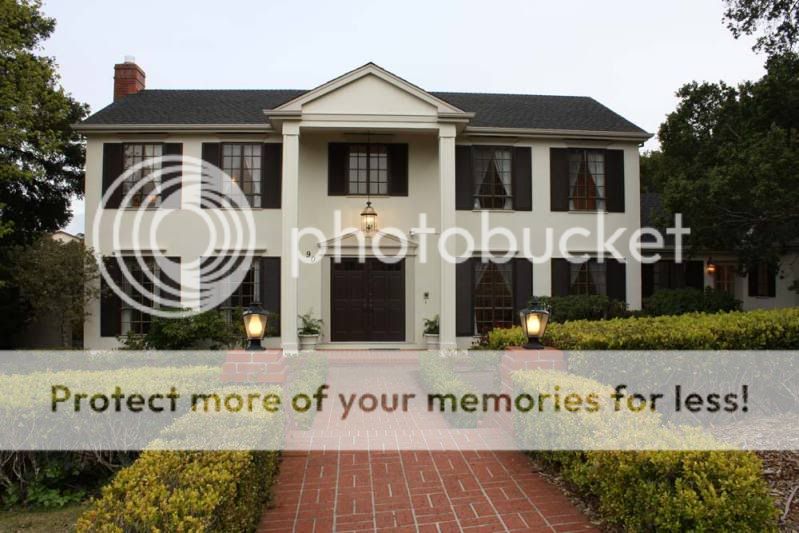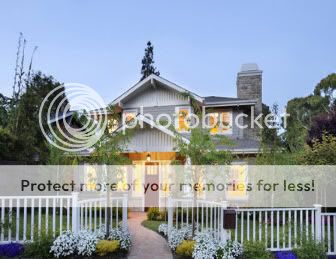You are using an out of date browser. It may not display this or other websites correctly.
You should upgrade or use an alternative browser.
You should upgrade or use an alternative browser.
How do i take a twilight photo like this with a Canon rebel XSI
- Thread Starter henrikjt
- Start date
Josh66
Been spending a lot of time on here!
- Joined
- Oct 31, 2007
- Messages
- 14,593
- Reaction score
- 1,239
- Location
- Cedar Hill, Texas
- Can others edit my Photos
- Photos NOT OK to edit
Tripod with long exposure - just expose for the sky.
Josh66
Been spending a lot of time on here!
- Joined
- Oct 31, 2007
- Messages
- 14,593
- Reaction score
- 1,239
- Location
- Cedar Hill, Texas
- Can others edit my Photos
- Photos NOT OK to edit
* Mount your camera to the tripod.
* Switch it to M (manual) mode.
* Choose your aperture (f/8 - f/11 looks like it would probably be about right for this).
Here I'm going to just assume that adjustments on the XSi are made the same way that they are on the XT (they probably are, but if something doesn't seem right - check the manual).
In M, to change the aperture hold down the "Av +/-" button on the back of the camera and roll the wheel on top until you get to your desired aperture (f/8 - f/11)
* Point your camera at the sky.
* Now, looking at the meter at the bottom of the viewfinder (-2**1**V**1**+2), adjust the shutter speed (just roll the wheel on the top of the camera) until the moving needle at the bottom lines up with the stationary needle at the top.
It is now set to properly expose the sky.
(If you took 'too long' setting everything up, the camera might have gone into power save mode - just press the shutter button half-way)
* Compose your shot, focus, take the picture. (Using a remote can't hurt, if you have one.)
----
If it's getting dark (darker than 'dusk'), you may find that 30 seconds (longest exposure you can do without going into Bulb) is not long enough.
If that happens, there are a few things you can do.
You could increase the ISO, you could use a larger aperture (smaller f/#), or you could figure out how many seconds the exposure needs to be and expose that long in Bulb.
* Switch it to M (manual) mode.
* Choose your aperture (f/8 - f/11 looks like it would probably be about right for this).
Here I'm going to just assume that adjustments on the XSi are made the same way that they are on the XT (they probably are, but if something doesn't seem right - check the manual).
In M, to change the aperture hold down the "Av +/-" button on the back of the camera and roll the wheel on top until you get to your desired aperture (f/8 - f/11)
* Point your camera at the sky.
* Now, looking at the meter at the bottom of the viewfinder (-2**1**V**1**+2), adjust the shutter speed (just roll the wheel on the top of the camera) until the moving needle at the bottom lines up with the stationary needle at the top.
It is now set to properly expose the sky.
(If you took 'too long' setting everything up, the camera might have gone into power save mode - just press the shutter button half-way)
* Compose your shot, focus, take the picture. (Using a remote can't hurt, if you have one.)
----
If it's getting dark (darker than 'dusk'), you may find that 30 seconds (longest exposure you can do without going into Bulb) is not long enough.
If that happens, there are a few things you can do.
You could increase the ISO, you could use a larger aperture (smaller f/#), or you could figure out how many seconds the exposure needs to be and expose that long in Bulb.
Overstanding
TPF Noob!
- Joined
- Mar 15, 2009
- Messages
- 70
- Reaction score
- 1
- Location
- California
- Can others edit my Photos
- Photos NOT OK to edit
Very nice in depth instructions Josh, and I hope you get your shot henrikjt.
henrikjt
TPF Noob!
- Joined
- Apr 30, 2009
- Messages
- 14
- Reaction score
- 0
- Thread Starter 🔹
- #6
* Mount your camera to the tripod.
* Switch it to M (manual) mode.
* Choose your aperture (f/8 - f/11 looks like it would probably be about right for this).
Here I'm going to just assume that adjustments on the XSi are made the same way that they are on the XT (they probably are, but if something doesn't seem right - check the manual).
In M, to change the aperture hold down the "Av +/-" button on the back of the camera and roll the wheel on top until you get to your desired aperture (f/8 - f/11)
* Point your camera at the sky.
* Now, looking at the meter at the bottom of the viewfinder (-2**1**V**1**+2), adjust the shutter speed (just roll the wheel on the top of the camera) until the moving needle at the bottom lines up with the stationary needle at the top.
It is now set to properly expose the sky.
(If you took 'too long' setting everything up, the camera might have gone into power save mode - just press the shutter button half-way)
* Compose your shot, focus, take the picture. (Using a remote can't hurt, if you have one.)
----
If it's getting dark (darker than 'dusk'), you may find that 30 seconds (longest exposure you can do without going into Bulb) is not long enough.
If that happens, there are a few things you can do.
You could increase the ISO, you could use a larger aperture (smaller f/#), or you could figure out how many seconds the exposure needs to be and expose that long in Bulb.
Thanks for the very detailing explanation josh. I did not figure out how to expose for the sky, the shot i uploaded here was shot with f11 and 1/20 and iso 100. The shot was not very dramatic, maybe it wasnt dark enough or i probably did something wrong. On my XSI i couldnt find any moving needle that would line up with a stationary needle. I will try this again and let you know if it turns out better than this time. Thanks again

Josh66
Been spending a lot of time on here!
- Joined
- Oct 31, 2007
- Messages
- 14,593
- Reaction score
- 1,239
- Location
- Cedar Hill, Texas
- Can others edit my Photos
- Photos NOT OK to edit
Not too bad. The sky is a little over exposed, but the house looks good.
A half hour or so later and the sky probably would have looked a lot better.
You should be able to see it inside the viewfinder (at the bottom), and also on the LCD on the back (not the big one, the small one at the top that shows your settings).
Hmm... Just searched google images. I guess you don't have the small LCD on the back. You should still be able to see it inside the viewfinder though.
A half hour or so later and the sky probably would have looked a lot better.
On my XSI i couldnt find any moving needle that would line up with a stationary needle.
You should be able to see it inside the viewfinder (at the bottom), and also on the LCD on the back (not the big one, the small one at the top that shows your settings).
Hmm... Just searched google images. I guess you don't have the small LCD on the back. You should still be able to see it inside the viewfinder though.
Josh66
Been spending a lot of time on here!
- Joined
- Oct 31, 2007
- Messages
- 14,593
- Reaction score
- 1,239
- Location
- Cedar Hill, Texas
- Can others edit my Photos
- Photos NOT OK to edit
This is what it looks like:




Bitter Jeweler
Been spending a lot of time on here!
- Joined
- Apr 27, 2009
- Messages
- 12,983
- Reaction score
- 4,999
- Location
- Cleveland, Ohio
- Can others edit my Photos
- Photos OK to edit
The Exposer Meter (and needle) are right under the Shutter Speed on the LCD on the back of the camera.
[edit] yeah that ^^^
[edit] yeah that ^^^
Dwig
TPF Noob!
- Joined
- Mar 11, 2009
- Messages
- 1,261
- Reaction score
- 1
- Location
- Key West FL
- Can others edit my Photos
- Photos NOT OK to edit
T...The shot was not very dramatic, maybe it wasnt dark enough...
There is one set of steps missing in the instuctions posted that are essential if you want to replicate the effect in the first sample image. You need to do two separate meter readings.
On day one, you need to go inside the house and meter the exposure necessary to properly expose a picture in one of the front rooms. This needs to be done after dark so that the only illumination is from the room's lights, no sunlight adding illumination.
On day two either at evening before sunset or in the morning before sun rise, the choice depends on the direction the house faces, you need to setup the shot and take meter readings of the general sceen WITHOUT the house or its lights in the picture. You should keep taking readings as the scene gets darker (sunset) or lighter (sunrise) until the readings come close to matching the interior reading you made on day one.
You now set the camera manually to the f/stop and shutter speed from the meter reading on day one and start taking a series of pictures 30 sec to a minute apart as the overall scene changes brightness. You can then choose from the bracketed set where the interiors viewed through the windows are consistantly exposed and the outdoor portion varies in exposure.
Alternately you could shoot the series at varying expsures where the outdoor sceen is consistantly exposed. This yields a bracketed set with uniform outdoor exposure and varying brightness on the interiors viewed through the windows. Again, you pick the best balance from the bracketed set.
The second posted picture is "drab" for two reasons. One, it was too bright outside leaving the interiors underexposed. And two, the interiors were not evenly illuminated; only the two upper left windows show any interior light.
Most reactions
-
 196
196 -
 157
157 -
 155
155 -
 134
134 -
 128
128 -
 125
125 -
 104
104 -
 101
101 -
 99
99 -
 88
88 -
 77
77 -
M
77
-
 62
62 -
 61
61 -
 57
57
Similar threads
- Replies
- 10
- Views
- 583
- Replies
- 13
- Views
- 2K
- Replies
- 16
- Views
- 1K
- Replies
- 6
- Views
- 229
- Replies
- 12
- Views
- 866











